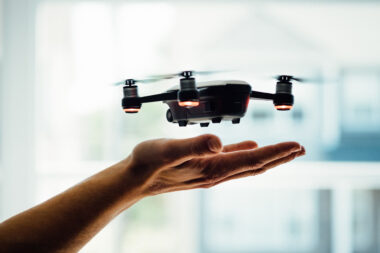Introduction
The concept of a stasis chamber has long captured the imagination of science fiction enthusiasts, often portrayed as a means to preserve astronauts during extended space travel. While the idea may seem far fetched, modern aerospace research is actively exploring technologies that could bring this concept closer to reality. Stasis chambers have the potential to revolutionize deep space exploration by addressing challenges like resource consumption, psychological strain, and the biological effects of prolonged space travel.
Understanding Stasis Chambers A stasis chamber is a hypothetical device designed to induce a state of suspended animation in humans, significantly slowing down metabolic processes without causing harm. The goal is to minimize physiological deterioration, conserve resources, and reduce crew fatigue during long duration missions.
Applications in Aerospace In the aerospace industry, stasis chambers are being researched for potential use in:
- Interplanetary Travel: Missions to Mars or beyond may require astronauts to endure journeys lasting several months or even years. By placing crew members in a stasis state, oxygen, food, and water requirements could be drastically reduced.
- Deep-Space Exploration: For missions extending beyond our solar system, stasis chambers could become essential to preserving crew vitality over extended periods.
- Medical Interventions in Space: Stasis technology may also offer a way to stabilize astronauts experiencing severe medical conditions until they can receive proper treatment.
Architectural Design of Stasis Chambers Modern stasis chamber designs blend advanced technology with ergonomic architecture to ensure both functionality and occupant safety. The key components and design features include:

- Outer Shell and Structure:
- Constructed from reinforced glass and metal alloys, the exterior shell is designed to withstand pressure fluctuations and potential impacts during space travel.
- The chamber’s cylindrical body is streamlined to maximize space efficiency within spacecraft interiors.
- Interior Design and Comfort:
- The interior features a reclining, padded surface designed to cradle the human body in a relaxed, ergonomic posture.
- Specialized cushions with memory foam properties are included to prevent pressure sores and ensure even weight distribution.
- Environmental Control Systems:
- Integrated air filtration and oxygen regulation systems maintain optimal atmospheric conditions.
- Temperature control mechanisms use advanced cooling systems to induce controlled hypothermia while ensuring thermal stability.
- Biometric Monitoring Systems:
- Sensors embedded in the interior monitor vital signs such as heart rate, respiration, and oxygen saturation.
- Automated systems can adjust environmental factors in response to physiological changes.
- Nutrient and Fluid Management:
- Tubes are integrated into the chamber to provide intravenous nutrients and hydration for prolonged stasis periods.
- Wake Up Mechanism:
- The chamber’s reactivation process is controlled by sophisticated software designed to gradually restore body temperature and metabolic function without shocking the system.
Key Components and Technologies Used in Stasis Chambers To ensure optimal functionality, the following components, sensors, and technologies are integrated into modern stasis chamber designs:
1. Sensors and Monitoring Devices:
- Electrocardiogram (ECG) Sensors: To continuously monitor heart rate and detect irregularities.
- Pulse Oximeters: To measure oxygen saturation levels.
- Infrared Thermometers: To regulate body temperature accurately.
- Electromyography (EMG) Sensors: To track muscle activity and prevent muscle atrophy.
- Respiratory Rate Monitors: For real-time breathing pattern analysis.
- CO2 Sensors: To manage air quality and ensure proper ventilation.
2. Cooling and Cryogenic Technology:
- Peltier Modules: Advanced thermoelectric devices to regulate precise cooling.
- Liquid Nitrogen Systems: For rapid induction of controlled hypothermia.
- Phase Change Materials (PCMs): To provide steady temperature control.
3. Fluid and Nutrient Management Systems:
- Automated Intravenous Systems: Deliver essential nutrients, electrolytes, and medications.
- Peristaltic Pumps: To ensure precise fluid flow.
4. Software and Control Systems:
- Machine Learning Algorithms: To predict and respond to changes in vital signs.
- AI-Powered Diagnostic Systems: For early detection of potential health concerns.
- Real-Time Data Logging Software: To record and analyze medical information.
5. Programming Languages and Frameworks:
- Python: Widely used for AI integration, data analysis, and control systems.
- C++: Provides efficient real time control in hardware-based components.
- MATLAB: Employed for bio signal processing and algorithm design.
- LabVIEW: Commonly used for developing monitoring interfaces in medical devices.
- ROS (Robot Operating System): Ensures seamless integration of sensors and control systems.
Technological Challenges Developing functional stasis chambers presents several challenges:
- Metabolic Control: Researchers must find safe methods to slow down the body’s metabolic processes without causing irreversible damage.
- Cryogenic Technology: While inducing hypothermic states has shown potential, refining this technique to ensure controlled reawakening remains complex.
- Muscle Atrophy and Bone Density Loss: Prolonged immobility in space poses risks to musculoskeletal health, which must be addressed for stasis chambers to be viable.
- Psychological Impact: The mental toll of waking up after prolonged suspension presents unique psychological concerns.
Case Study: Implementation of Stasis Chamber Technology in Aerospace Missions
Introduction In the pursuit of efficient long duration space travel, a leading aerospace research team conducted a series of experiments to design and implement a functional stasis chamber system for astronauts. The objective was to develop a safe and effective method to induce suspended animation, reducing resource consumption and improving crew well-being during extended missions.
Research Objectives The research team outlined three primary goals:
- Develop a reliable method for inducing and reversing metabolic stasis.
- Integrate automated monitoring and control systems for vital signs.
- Establish safety protocols for emergency wake-up procedures.
Design and Development Process The project began with the development of a prototype stasis chamber featuring several critical design elements:
1. Structural Framework:
- The chamber was constructed using an alloy of titanium and carbon fiber to ensure durability and impact resistance.
- A triple layered acrylic viewing window allowed for external visual monitoring.
2. Thermal Regulation System:
- A combination of liquid nitrogen cooling and phase-change materials maintained stable core body temperatures.
- An array of Peltier modules enabled precise heat regulation.
3. Biometric Monitoring Systems:
- ECG sensors, pulse oximeters, and infrared thermometers tracked heart rate, oxygen levels, and body temperature.
- EEG sensors monitored brainwave activity to ensure neurological stability.
4. Automated Nutrient Delivery:
- Intravenous (IV) nutrient systems ensured hydration and electrolyte balance.
- Automated peristaltic pumps administered customized nutrient solutions based on monitored vitals.
5. Software Control Systems:
- A combination of Python and C++ was used to manage the control algorithms and data analytics systems.
- AI-driven prediction models adapted environmental conditions based on biometric patterns.
- LabVIEW-based interfaces facilitated real-time status monitoring and alert systems.
Testing and Validation The stasis chamber underwent rigorous testing in simulated space environments. Test phases included:
Phase 1: Short-Term Trials:
- Test subjects were placed in the chamber for durations ranging from 12 to 72 hours. Vital signs remained stable, and subjects experienced no adverse effects.
Phase 2: Mid-Term Trials:
- Prolonged trials lasting up to two weeks were conducted with enhanced IV nutrient protocols and refined cooling mechanisms.
Phase 3: Emergency Protocol Testing:
- Simulated power failures and pressure leaks were initiated to test automated wake-up protocols and emergency safety mechanisms.
Results and Findings
- The stasis chamber successfully reduced metabolic rates by up to 60% without compromising vital functions.
- Automated nutrient delivery maintained consistent hydration and electrolyte levels.
- EEG monitoring confirmed stable neurological conditions during both induction and reawakening phases.
Challenges Encountered
- Initial trials revealed minor fluctuations in core body temperature, requiring improved thermal regulation algorithms.
- The development team refined oxygen supply systems to ensure precise CO2 management in prolonged stasis scenarios.
Conclusion The research team demonstrated that stasis chambers could effectively reduce astronaut resource consumption and improve mission sustainability for long-term space exploration. While further advancements are necessary for extended missions exceeding six months, this prototype has provided a strong foundation for future aerospace stasis chamber development.



